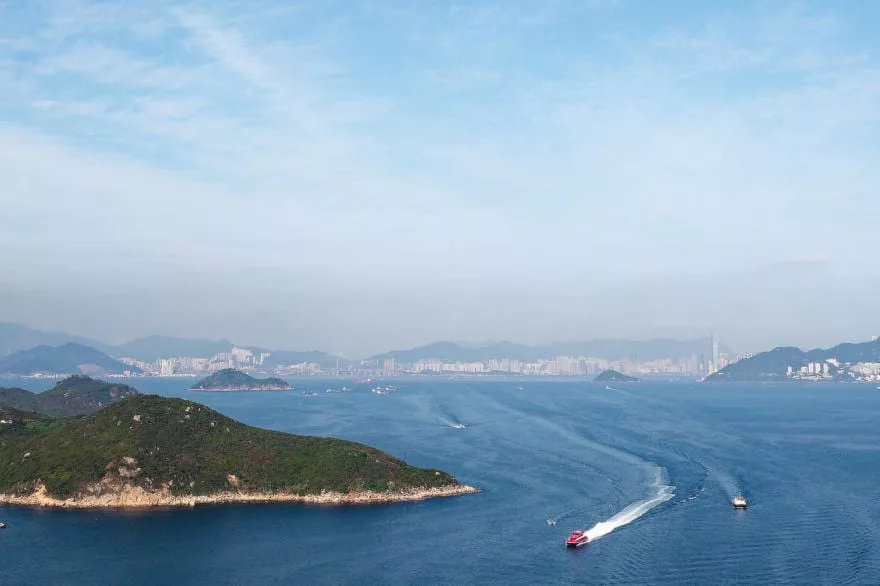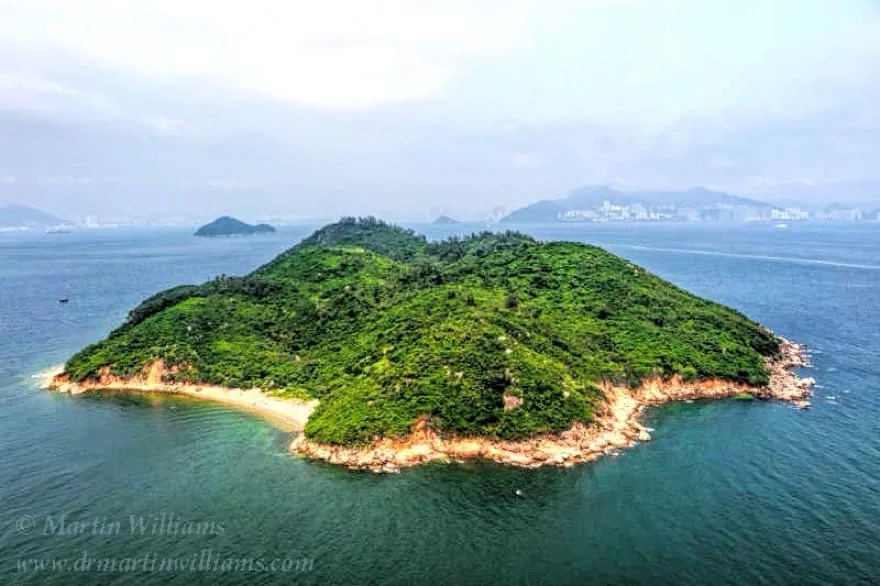The project that started as East Lantau Metropolis, became Lantau Tomorrow Vision, and now called Kau Yi Chau Islands Reclamation could be the most disastrous infrastructure project in Hong Kong’s history – costing huge sums of money, unsustainable, and ultimately unable to realise any of the vaunted aims of creating a business district and a good place to live. To save your time, some key reasons:
- Huge financial cost
- Not needed as place for people to live, with declining population, most people wanting to live in heart of city
- Third central business district idea a fantasy; Hong Kong doesn’t really have two CBDs, and the main one – Central and nearby – now struggling
- Hong Kong economy is struggling, going backwards even
- Climate changing means increase threat from rising sea levels, storm surges
- The project will suck up resources that could be used for climate resilience for existing city
- Vast amounts of fill is required, and sourcing this is unsustainable
- The “plans” are terrible, a mishmash of half-thought out ideas, like 15-minute neighbourhood yet connected to Shenzhen
- “Urban forestry” after filling in the sea? Give me a break!
- Filling in a large area of sea near the city, with associated ugly infrastructure connecting to places like Kennedy Town waterfront

For more info on pros and cons, you might see quite a lengthy post on this site, with email correspondence between me and Sustainable Lantau Office: Questions about Kau Yi Chau Artificial Islands project off east Lantau Hong Kong. I mentioned some of the issues with the project, including the massive cost, vulnerability to storm surges, diverting resources from where they could be better use, HK economy doing badly now etc… In short, about the hubris involved; seems like a fantasy really.
On this page, I’ll post a few snippets of articles etc indicating the project is utterly unsustainable.

“Incalculable” Economic Impacts
For more on issues with this project:
A massive development project off Lantau Island could have “incalculable” ecological impacts, a Hong Kong research group has said after the estimated price tag for the proposed artificial islands ballooned to HK$580 billion.
Consequences of the development of the Kau Yi Chau Artificial Islands could include coastal erosion and the destruction of marine habitats, Liber Research Community said
Proposed Lantau artificial islands project slammed for HK$580 billion price tag, local transport needs
Huge Cost, a Disaster in the Making
From a letter to the South China Morning Post:
The capital requirement of HK$580 billion (US$74 billion) is based on 2022 third-quarter costs. By the time construction begins in 2025 and assuming construction spans 20 years, the money-of-the-day value that must be set aside may approach HK$1 trillion, accounting for inflation between now and 2025 and during the 20-year implementation period.
…
It is a disaster in the making and will end badly for Hong Kong.
Tom Yam; From Lantau Tomorrow Vision to Kau Yi Chau Artificial Islands: name change has not made the reclamation plan more rigorous
Hong Kong Economy Struggling
There are plenty of indications right now that Hong Kong’s economy is in serious trouble; many people know what some of the fixes are, but for the time being there are other priorities. Hence, can have news items like this:
Hong Kong’s office towers, among the most expensive commercial real estate in the world, have never been this empty.
Billionaire Li Ka-shing’s trophy asset at Cheung Kong Center is about 25 percent vacant, while his latest project underway across the street with sweeping views of Victoria Harbour has signed up one tenant.
Fellow tycoon Lee Shau Kee’s curved glass The Henderson building under construction nearby is just 30 percent leased. Rents and sale prices are cratering.
Hong Kong’s office towers have never been so empty
Even If You Build It, They May Not Come
Unlike the movie Field of Dreams, building something grandiose does not guarantee success. There are examples of projects that have started out with vast ambitions, but have in no way lived up to the boasts and hubris as they began.
I’ve been to Dubai, seen several abandoned projects scattered around; but not the huge island reclamation projects like The World islands, which evidently became a massive flop:
A decade since it was dredged from the seabed, The World is a forlorn sight. It was the most ambitious plan of Dubai’s pre-crash bubble
Not the end of The World: the return of Dubai’s ultimate folly
… Surveying the barren spots of sand that dot the sea today – which, in aerial images, make it look as if the Gulf is suffering from a nasty case of acne – it’s hard to shake the sense of an Ozymandian ruin. Covering more than 5,000 hectares – almost seven times the size of Venice – and encircled by a 20-mile-long breakwater, the remains of The World lie as a mind-boggling monument to the spectacular hubris of a moment in time when anything seemed possible
China is noted for having built a multitude of ghost cities – projects with buildings, streets etc, but essentially bereft of people and businesses, with promises unfulfilled.
One I’ve read of is on a reclamation at the coast of Tianjin: Caofeidian. Reports of its ghost city status are some years old, but looking online I can’t find anything to suggest there has been much of an uptick in occupancy, any real moves towards making it a success instead of a ghost city by the sea:
It was pledged to be ‘the world’s first fully realised eco-city’ – yet 10 years and almost $100bn later, only a few thousand inhabitants have moved to this land reclaimed from the sea …
The ‘eco-city’ was made possible through huge bank loans. Once it was half-built, these loans were halted and many projects suspended due to the rising cost of raw materials and a lack of government support.
Caofeidian, the Chinese eco-city that became a ghost town – in pictures






